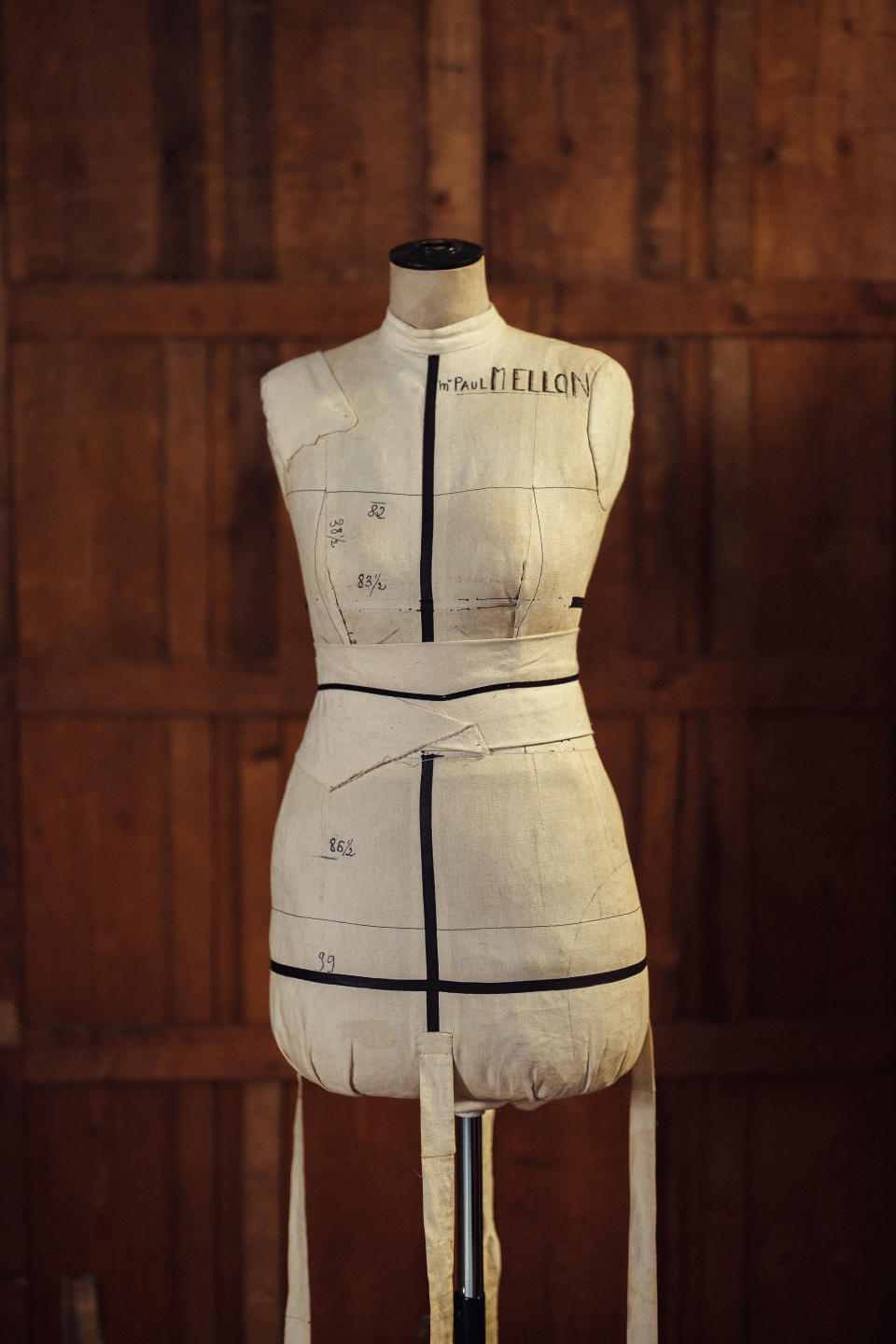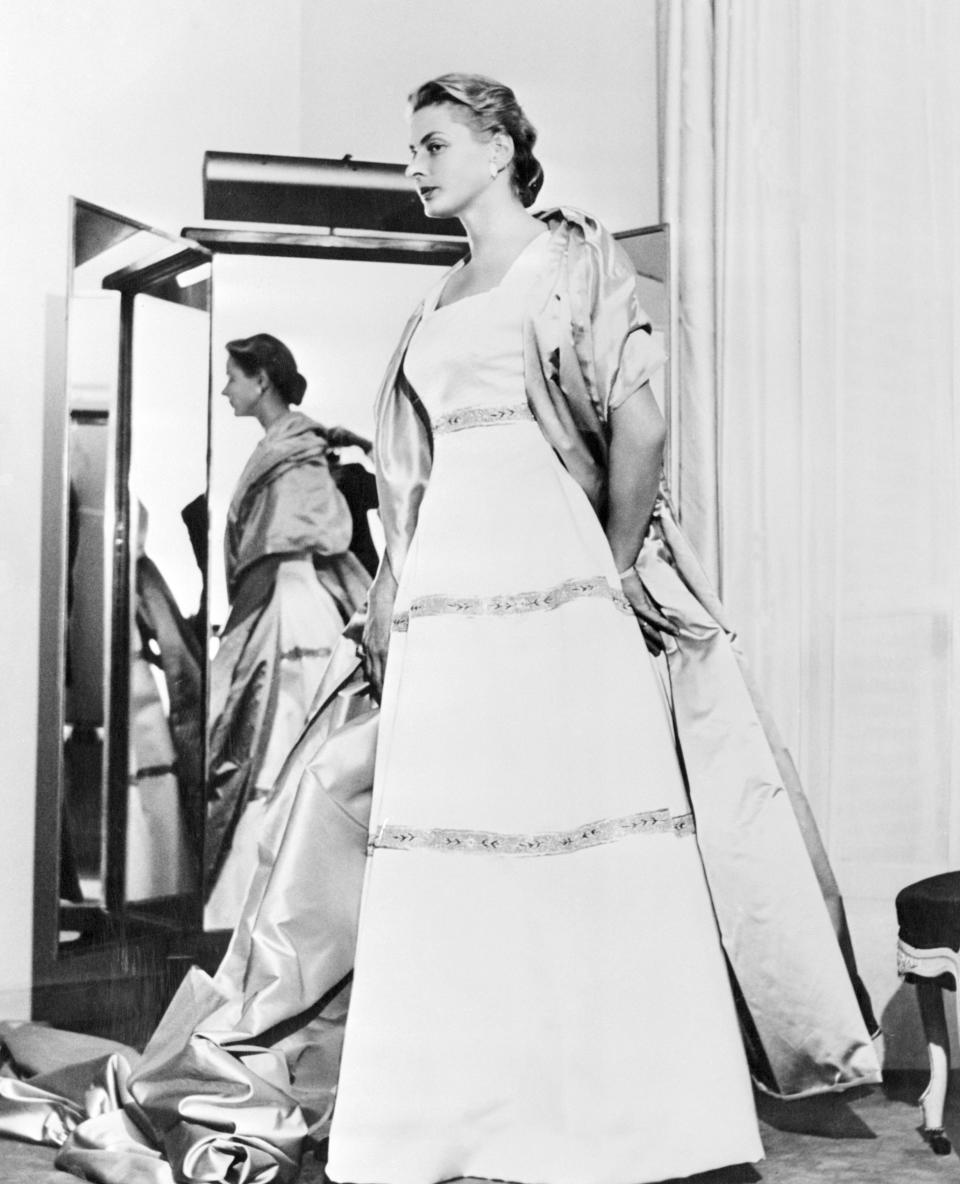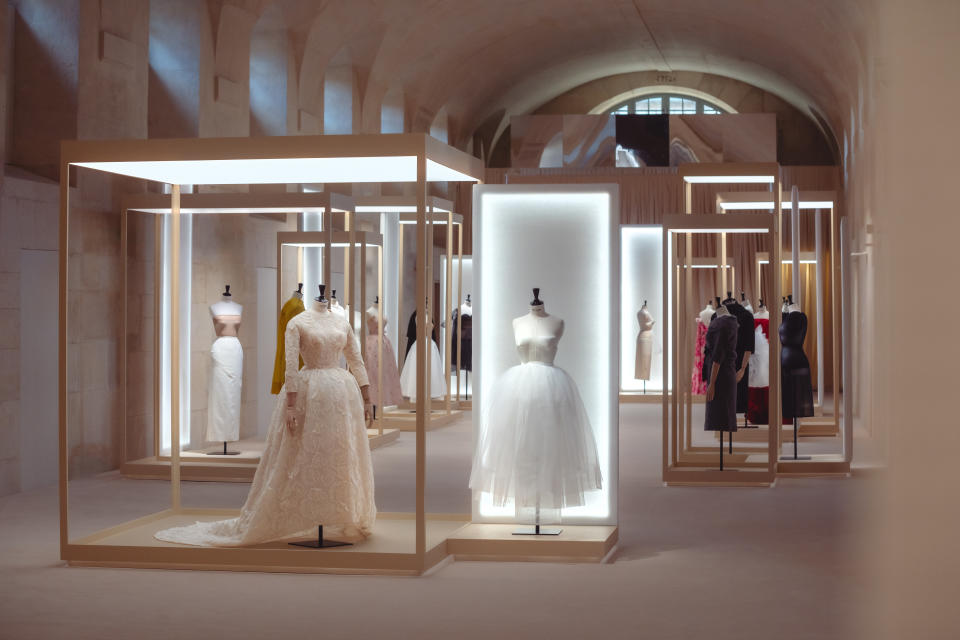Balenciaga Archive Exhibition Has a Size-inclusive Bent
- Oops!Something went wrong.Please try again later.

Balenciaga is shining a spotlight on clothes that have “experienced a forced exile, one that is strange and unjust only due to their proportions.”
So muses French fashion curator Olivier Saillard in the press notes for “The Woman Behind the Dress,” an exhibition showcasing Cristóbal Balenciaga creations for clients with a variety of figures.
More from WWD
Pugh's Tiffany Turn, Choo Chooses Cho, Ralph Lauren's Bigger Fortnite
Balenciaga Taps Isabelle Huppert, PP Krit Amnuaydechkorn as First Brand Ambassadors
Saillard notes that the Spanish couturier designed “his most beautiful jackets on the curved spine of his favorite model, Colette” and the 30 dresses assembled pay homage to the diversity of his clients’ morphology — and his skill in exalting their unique silhouettes.
“What he created on the body with the clothes was a bit like plastic surgery,” commented Demna, Balenciaga’s current artistic director.
The display at Kering’s Paris headquarters — the eighth one organized in tandem with European Heritage Days, and perhaps the first that might travel — also includes bust forms of Balenciaga’s clients, including famous ones like American society icon Bunny Mellon, her measurements scrawled in black ink on the white cotton Stockman.

It’s open to the public this Saturday and Sunday, and includes many never-before-seen outfits from the archive and newly acquired pieces.
There’s a wow factor in seeing the off-the-shoulder black velvet gown Grace Kelly wore on her 40th birthday to the Bal des Scorpions, also attended by Elizabeth Taylor and Richard Burton; and the flaring gown in slipper silk that Swedish actress Ingrid Bergman selected from the summer 1956 collection.

Kelly’s dress, from a 1966 collection, was first fitted on Cristóbal Balenciaga’s favorite model, Danielle Slavik, who wore it again last year for a couture show signed by the Kering-owned house’s current creative director Demna.
Other clients whose dresses figure in the exhibition were lesser known, but all were delivered garments crafted to suit their specific silhouette. Many had wadding and padding underneath to accentuate the lines of the dress; or shoulder pads on the hips to project and support the flare of a skirt.
According to Balenciaga, the exhibition breaks away from the standardized, model-sized way fashion is typically presented and exalts “the uniqueness of each individual’s morphology and the way in which personality can be expressed through clothing.”

Visitors can view most dresses from multiple angles, and can imagine how the light architecture underneath plays a supporting role to the design. They can also marvel at the sumptuous fabrics, including cozy wool lace, light-absorbing black velvet and white tarlatan embroidered with metallic leather and crystals.
Elisabeth Laubmann, who with her husband managed a textile mill in Germany, donated more than 30 ensembles from her wardrobe to Balenciaga, and one gets a sense of her precise and expressive style.
A bridal gown, composed of frothy guipure lace and boasting a long train, is attributed to a Lebanese client whose name is unknown.
The exhibition features dresses from 1946 to 1968.
Best of WWD

